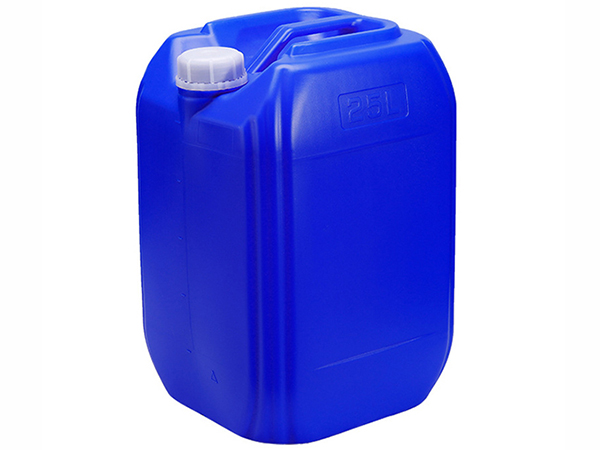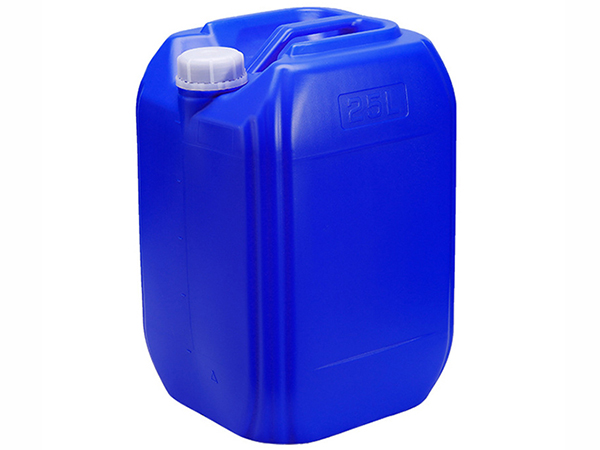
Jeans are timeless due to their rugged texture, nostalgic style, durability, straightness, and unique charm of comfortable wearing. It is not about changes in style and production technology, but rather about the ever-changing finishing process. To achieve a unique appearance effect on jeans, it is necessary to use processes such as stone grinding, snowflake grinding, enzyme grinding, and sand washing to wash the jeans
The finishing process after washing is a key process for obtaining a unique style for jeans. Among the many factors that affect the washing effect of jeans, this article focuses on analyzing and exploring factors such as additives, pH value, and bath ratio
1、 Additives forThe Effect of Jeans Washing
In the process of washing jeans, additives play an important role in the washing effect. Denim fabrics generally belong to pure cotton fabrics, which interact with fibers or dyes on the surface of the fabric through chemical or physical additives. In addition, certain mechanical external forces cause a certain degree of wear and tear to the fibers on the surface of the cotton fabric, or eliminate some dye pigments inside the cotton fabric, thereby achieving a certain wear and fade effect
1. Additives forJeans Stone MillEffect Impact
(1) Mechanism of ordinary stone grinding finishing
Stone grinding treatment involves placing pumice containing sodium hypochlorite and pre bleached jeans in an industrial washing machine for stone grinding treatment. Due to the mutual friction between pumice and jeans, jeans and jeans, and the action of the washing machine drum wall, the dye on the surface of the jeans is partially worn off, and a large amount of ash powder containing sodium hypochlorite is produced. It can be seen that the main chemical additive for stone grinding washing is sodium hypochlorite, which is a strong oxidant and can destroy indigo or sulfide melanin on denim clothing, playing a certain role in color stripping and bleaching. Due to the varying weight and unevenness of the ash powder adhered to clothing, the form, amount, and size of discoloration and whitening are also irregular
(2) Snowflake finishing mechanism
Snowflake grinding belongs to stone grinding washing, and its process principle is roughly the same as ordinary stone grinding, with the main difference in the selection of chemical additives. Ordinary stone mills generally use sodium hypochlorite as a strong oxidant, while snowflake mills often use potassium permanganate. It not only removes surface dyes through friction between pumice, jeans, and washing machine drum walls, but also releases oxygen through the self reduction of potassium permanganate solution in pumice, which strongly oxidizes the pigments to achieve uniform decolorization and achieve a uniform snowflake shape effect. The size and shape of the pumice particles washed by snowflakes should be similar, usually circular or egg sized. The size of pumice washed with ordinary stone grinding is generally 1-2cm, and the sizes vary, resulting in an irregular white snowflake effect. After being polished by snowflakes, the indigo jeans have a wide range of whitening surfaces, and the whiteness is even whiter. The contrast between the blue background and white surface is relatively large, unlike that of stone polishing, which is more uniform. The contrast between blue and white is small, and the areas where snowflakes polish the white are like piles of snowflakes, covered with pants, with a natural and romantic style like "blue sky and white clouds"
(3) Analysis of the influence of additives on the washing effect of jeans
Before finishing and washing, both are natural black and the fabric is twill elastic denim. However, after different stone grinding and washing processes, the style differences formed are so significant. The main reason for this difference is the different chemical additives and pumice used in the two washing processes. The main reason for the use of sodium hypochlorite as a chemical additive in the stone grinding process of the jeans shown in Figure 1 is that the amount of sodium hypochlorite used is low. The latter not only uses potassium permanganate as a strong oxidant during the washing process, but also adds an appropriate amount of concentrated bleaching water. The main chemical components of the concentrated bleaching water are hydrogen peroxide and potassium permanganate. Hydrogen peroxide and potassium permanganate in concentrated bleaching water react strongly with the black dye pigments on the surface of denim fabrics, making the color of black jeans very light and white. So the latter causes a deeper degree of fading after washing than the former. Furthermore, the pumice used in the jeans grinding process in Figure 1 have a small volume, approximately 1cm, and are uneven in size. The pumice used in the latter have a volume of approximately 2-3cm, and are of the same size. Therefore, the latter forms a regular snowflake pattern, with the white one becoming whiter, resembling a pile of snowflakes, creating a strong contrast effect, while the cloud pattern effect formed by the former is disorderly and disorganized
2. Additives forThe impact of sandblasting on jeans
The raw materials for sandblasting include diamond sand and potassium permanganate, both of which are high-pressure sprayed onto the fixed parts of the jeans, usually on the front, back, and buttocks of the thighs, to lighten the surface color and achieve a worn out effect. The former is called sandblasting, and the latter is called spray monkey. Due to the different raw materials used, different fading reactions with different properties occurred, resulting in differences in the washing effect
Sand blasting and monkey spraying are carried out before desizing and washing water. Sandblasting is powered by compressed air, and high kinetic energy angular diamond sand material is sprayed onto a certain part of the jeans through a spray gun. The sand material has a strong impact on the surface of the jeans, causing the surface pigment to peel off, thereby achieving a fading effect. It can be seen that sandblasting mainly uses diamond sand as the raw material, which causes the denim fabric to fade through physical effects. Spray Monkey is the use of a spray gun to spray chemical solvents such as potassium permanganate or sodium hypochlorite onto fixed areas of jeans, such as the buttocks. Potassium permanganate droplets are evenly distributed on the surface of denim fabric, causing chemical reactions and fading of the fabric. The mechanical shock force of sand blasting makes the size layer of jeans fabric vibrate loose or split to achieve soft and loose effect. Therefore, sandblasting causes physical damage to the surface of the fabric, only causing a fading effect on the surface without a sense of layering. Spray Monkey uses potassium permanganate as an auxiliary agent and has a strong oxidation effect with the pigments of denim fabric. Therefore, spray Monkey can achieve a strong fading effect, and the fading is uniform, with fading on the surface and inner layers, giving a sense of layering

2、 The influence of bath ratio and temperature on the washing effect of jeans
The washing process of jeans is mostly based on a series of complex chemical reactions, and different controls on temperature and solvent content will have different effects on the washing effect. Bath ratio refers to the ratio of the weight of the washed fabric to the amount of additives, which is used in dyeing and finishing to represent the amount of additives. Taking the enzyme washing process as an example, analyze the impact of temperature and bath ratio on the enzyme washing effect
1. Enzymatic washing mechanism of jeans
Enzymatic washing uses cellulase as the main chemical auxiliary, and cellulase is divided into Denimax enzyme (neutral cellulase) and Denimax Acid enzyme (acidic cellulase) based on the appropriate pH value of the enzyme. Jeans are generally made of cotton fabric, which is composed of cellulose fibers. Enzymatic washing is the use of cellulase to hydrolyze cellulose fibers, causing partial dissolution of fibers on the surface of denim fabrics. Dyes such as indigo, vulcanization, and reduction also peel off through the friction and rubbing action of the washing equipment, thereby achieving a "sense of wear out" effect. After enzyme washing, the fabric has little loss of strength, a smooth surface, a unique and bright appearance, and the fabric's softness, drape, and water absorption have also been improved
2. The influence of bath ratio and temperature on the enzymatic washing effect
In the enzymatic washing process of jeans, bath ratio is a key factor. The bath ratio is too small, resulting in too little liquid in the fabric, uneven friction, and affecting the enzyme washing effect; If the bath ratio is too large, the amount of enzyme used will increase the cost, and the amount of liquid will make the fabric easy to float on the liquid surface. The contact with the enzyme is not close, and the friction is not sufficient. Moreover, it will greatly damage the fabric, causing a decrease in the strength of the jeans fabric after enzyme washing. For common denim, the bath ratio is generally controlled at 1:10~15. For thick and durable jeans, a small amount of pumice can be added during cellulase treatment, which can improve enzyme washing efficiency and produce a unique stone grinding white style. Furthermore, the activity of enzymes can only be maintained under specific temperature conditions. If the temperature is too high or too low, the activity of enzymes will decrease or even lose, resulting in insufficient hydrolysis reaction and inability to achieve the final fading effect. The temperature at which cellulase has the best activity is generally 40 ℃ -60 ℃. For example, the optimal operating temperature for acidic enzymes is 55 ℃. 65 ℃ will cause the enzyme to lose its activity, and 30 ℃ will reduce its performance. It can be seen that temperature and bath ratio have important effects on the enzymatic washing effect
3、 PH value and time vs.Effect of Jeans Washing
During the enzyme polishing process, the indigo dye suspended in the aqueous solution will exhibit a strong tendency to return to the surface of the jeans garment, causing the stitching and inner pockets of the garment to turn blue. This tendency to backstick mainly depends on the pH value of the water bath, and there is a significant backstick phenomenon below pH 6. For example, the optimal operating point of the Denimax Acid enzyme is pH 5. When pH is 6, its performance decreases by 50%, but the back staining phenomenon of the acid enzyme is more severe at pH 5, which can be removed by light bleaching with sodium hypochlorite or hydrogen peroxide. The acid enzyme has a high activity, which has a high erosion effect on cellulose fibers, and has a large loss of strength on cotton fabrics. However, it can be worn in a short time. Generally, the acid enzyme washing time is controlled at 45-90 min. The optimal working point of the denimax enzyme (neutral enzyme) washing solution is at pH 6, which can maintain the optimal performance of over 90% at pH 7. However, the phenomenon of back staining is minimal, and there is no need for bleaching after washing. The activity of neutral enzyme is low, the erosion of cellulose fiber is weaker than that of acid enzyme, and the loss of fabric strength is small, but the neutral enzyme washing time is longer, generally controlled at 60-120 min
4、 The influence of other factors on the washing effect of jeans
In addition to the important factors mentioned above that have a significant impact on the washing effect of jeans, there are also other factors such as different process operation equipment that can lead to differences in the washing effect. If both have undergone cat whisker sorting, but exhibit different style effects. One is a striped cat whisker pattern that presents a white shadow effect, while the other cat whisker pattern is honeycomb shaped, with a strong three-dimensional sense, giving it a sense of hierarchy compared to the former
The difference between the two is mainly due to differences in operating equipment and tools. The former is called hand wiping cat whiskers, which is mainly done by hand. The parts that need to be manually wiped are first placed on a rubber plate with a convex and concave shape of cat whiskers, and then manually rubbed with sandpaper on the surface of the jeans. The concave areas of the rubber plate do not occur or only slightly rub against the sandpaper, basically retaining the original color of the jeans fabric, while the protruding parts directly rub, causing damage to the dyeing base layer of the friction surface, Formed a slight white shadow effect. The three-dimensional cat whisker is made by washing jeans with water, pressing the desired pattern with a high-temperature machine, spraying glue to shape, and drying them in a fan furnace. Therefore, the resulting cat whisker has a more three-dimensional shape, strong stability, and is not easily deformed
5、 Summary
In the context of the rapid development of the jeans industry, research on the factors that affect the washing effect of jeans will provide more suitable process conditions for the washing process of jeans, play an important role in the design of the jeans process flow, and also have important significance for the development of jeans clothing
About
Brief introduction Application Certificate Laboratory Connectproduct
Post finishing agent Enzymatic water Brightener Printing/Coating Additives MoreNews
Dynamic Lnformation Common
Mobile website

TRL:+86 0769-88124837
Chinese mailbox:dgtshdrl@163.com
English mailbox:postmaster@tianshengchem.com
Guangdong Tiansheng Environmental Protection New Material Technology Co., Ltd. Copyright © 2023 all rights reserved